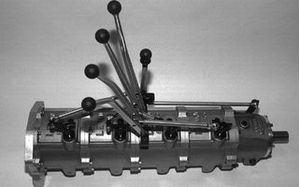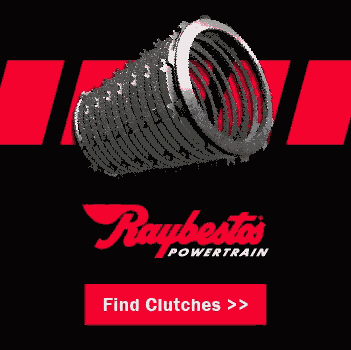What is DSG Transmission and its Typical Repair Issues
The abbreviation “DSG” stands for Direkt Schalt Getrieb and literally means “Direct Shift Gearbox”. In fact, this is only one of many types of preselective automated gearboxes equipped with two clutches. Basically, DSG it is the manual transmission with the automated control.
When it is required to shift gears, the ECU sends a special "command" to actuators and they disconnect the clutch slave driving disc from the clutch driven disc, thereby disconnecting the link between the powertrain and the gearbox. As a result, after the shafts with the gears move, the discs get connected again and the torque transmission process resumes. It should be noted that the ECU does not always cope with this task quickly, and in most cases it takes more time than the driver would need to shift gears independently. Therefore, admirers of dynamic driving prefer to buy a car with a conventional manual transmission.
Learn more about DSG
transmissions
The difference between
DSG6 and DSG7
There are two types of direct shift gearboxes -
DSG6 (DQ-250) and DSG7 (DQ-200). The 6-speed DSG6 transmission was released in 2003. The double
clutch of the DSG6 was oil-bath lubricated ("wet" version). A large
amount of oil turned out to be a significant problem, because it led to loss of
the engine power. This problem became the main reason for development of a new
transmission (DSG7) which was presented by Volkswagen in 2008.

The DSG7 design allowed engineers to reduce the volume of used transmission fluid, because it is now only used for lubrication, and not for cooling the clutch. As a result, the efficiency is increasing, and the fuel consumption is reduced. However, the use of dry clutch led to the emergence of other problems, which we will discuss below. In general, the only thing that distinguishes the DSG7 from the DSG6 (in addition to the difference in the amount of transmission fluid) is the presence of the 7th gear. The DSG7 transmission is installed on medium cars, which are not so demanding in terms of speed and are intended for a smooth and regular driving style.
Typical repair issues
in DSG7
There are many problems that you may encounter
when driving a car equipped with the standard DSG7 transmission. The most
common issues are the following
:
- Vibrations often occur when the driver shifts from the 1-st to the 2-nd gear and back. The reason: clutch discs get interlocked abruptly and it turns out as if you release the clutch pedal. In this case the error occurs in the mechatronics and it can be fixed by the mechatronics re-flashing or replacement.
- The appearance of vibrations on the 2-nd gear when driving at low speeds. In this case, the problem may be caused by the absence of the torque-vibration damper on the second clutch. Engineers of Volkswagen AG assumed that it would be enough to install a damper on the first clutch, because it is subjected to higher loads. In addition, the area of the first friction clutch is larger than the area of the second friction clutch. When the company LUK (responsible for production of the DSG7) released the clutch with changed material of the friction, the level of complaints about this problem decreased, but it did not completely disappear. VAG specialists try to fix this problem by updating the software, but the mechatronics update alone cannot solve the problem of the whole construction. To put it simply, this problem will remain until the release of a new transmission model.
- Knocks in the transmission while driving at low speeds – this is another common problem for DSG7. The official explanation for this problem is based on the fact that the gearbox contains a large number of tightly placed parts and, under certain conditions, vibrations may appear due to heavily loaded parts and gears. Considering the fact that this transmission model has not so much transmission fluid, sound transmission from the gearbox to the outside is more intense. Basically, this noise affects the personal comfort of the driver and passengers without any negative impact on the gearbox performance and its resource. This “inconvenience” is not even considered to be a malfunction; therefore transmission repair specialists cannot eliminate this problem.
- Jolts when moving the car from a standstill or when shifting to "D", "S", "M" modes. This problem may be caused by several reasons: clutch failure, mechatronics issues, or problem in powertrain unit. Whatever may be the reason of this problem, it is necessary to check your car at the workshop when you notice the abovementioned symptoms.
- The mechatronics failure also may be caused by different reasons. In most cases, the reason lies in software version and vehicle operating conditions. Early DSG models often were diagnosed with the mechatronics failure caused by the software error. Today, most of the problems have been eliminated thanks to regular updates. As a result, the electronics started working more properly, but not ideally. For example, abrupt start with pressed brake pedal can easily lead to breakdown of the transmission with a “dry” clutch.
Great video about the mechatronics unit in DSG7
As you can see, all the problems mentioned
above are caused by complex design of the DSG7 transmission. It turns out that
specialists of Volkswagen AG tried to produce an ideal transmission, but now
they have to pay for their mistakes with annual upgrades of the transmission.
Despite a large list of potential problems, many cars equipped with this
transmission have been successfully operating for many years without serious
failures. But, before you buy a car equipped with the DSG7 transmission, it is
recommended to weigh all pros and cons of this unit and consult an expert in
this field.








